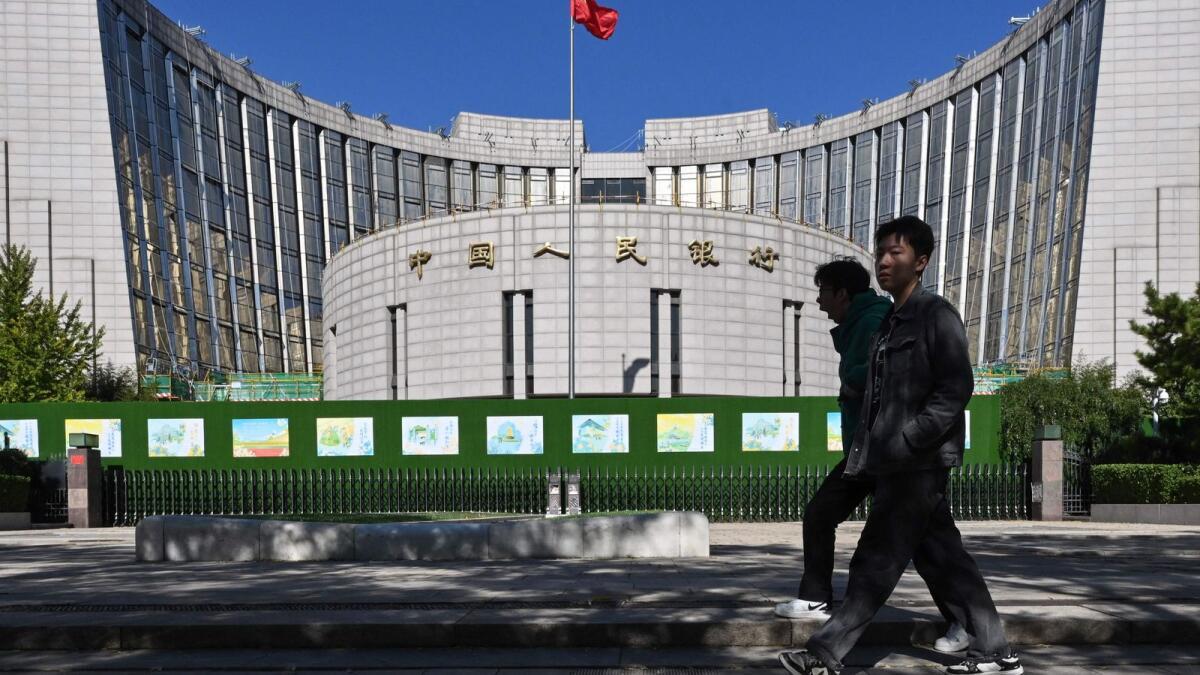
China Dec New Bank Loans Beat Forecasts As Government Support Kicks In
Twenty analysts polled by Reuters had predicted new yuan loans would rise to 800 billion yuan last month, from 580 billion yuan in November and compared with 1.17 trillion yuan a year earlier.
The People's Bank of China (PBOC) does not provide monthly breakdowns but Reuters calculated the December figures based on the bank's January-December data released on Tuesday, compared with the January-November figure.
The PBOC said new yuan loans totalled 18.09 trillion yuan for all of 2024, the lowest level since 2019, highlighting the reluctance of many businesses and households to take on more debt as the Chinese economy sputtered.
“Growth of bank loans slowed but the growth of social financing quickened. Credit is expected to rebound in the future to support economic recovery,” said Xing Zhaopeng, ANZ's senior China strategist in Shanghai.
Despite downward pressure facing the yuan currency, analysts polled by Reuters expect further cuts in key lending rates and bank reserve ratios in the first quarter this year.
A durable recovery in China's economy has been elusive as the country grapples with a prolonged property crisis, weak domestic demand and high local government debt.
But there have been some signs of improvement after policymakers announced a series of fiscal and monetary policy measures since last September to keep the economy growing and soften the blow from an expected increase in U.S. trade tariffs.
US president-elect Donald Trump had pledged tariff hikes exceeding 60 per cent on Chinese goods and since winning the November presidential election has assembled a policy team that is hawkish towards China.
China will adjust and improve the force and pace of its policy implementation to hit its full-year economic and social development targets, PBOC deputy governor Xuan Changneng said at a press conference in Beijing on Tuesday.
Measures announced by Beijing included a $1.4 trillion debt package to ease local government financial strains and tax incentives on home and land transactions to spur demand and reduce property developers' financial burdens, moves that may be bearing some fruit.
Household loans, including mortgages, rose to 350 billion yuan in December from 270 billion yuan in November, while corporate loans rose to 490 billion yuan from 250 billion yuan, according to Reuters calculations based on central bank data.
China will implement more proactive policies to promote growth in 2025, President Xi Jinping said in his New Year's address. Authorities have expanded the scope of a consumer goods trade-in scheme in efforts to revive sluggish domestic demand.
Broad M2 money supply grew 7.3 per cent from a year earlier in December, central bank data showed, in line with analysts' 7.3 per cent forecast in the Reuters poll. In November, M2 grew 7.1 per cent.
The narrower M1 money supply fell 1.4 per cent in December from a year earlier, from a 3.7 per cent drop in November.
Outstanding yuan loans grew 7.6 per cent in December from a year earlier, slightly slower than 7.7 per cent in November but marking a new record low. Analysts had expected 7.6 per cent growth.
December outstanding total social financing (TSF), a broad measure of credit and liquidity in the economy, grew 8 per cent, improving from the record low of 7.8 per cent seen in October and November. Acceleration in government bond issuance could help boost growth in TSF.
TSF includes off-balance sheet forms of financing that exist outside the conventional bank lending system, such as initial public offerings, loans from trust companies, and bond sales.
TSF rose to 2.86 trillion yuan in December from 2.34 trillion yuan in November. Analysts polled by Reuters had expected TSF of 2 trillion yuan.
“We expect strong government bond issuance to continue supporting credit growth over the coming quarters. But weak private demand will prevent a significant rebound,” Zichun Huang, China economist at Capital Economics, said in a note.

Legal Disclaimer:
MENAFN provides the
information “as is” without warranty of any kind. We do not accept
any responsibility or liability for the accuracy, content, images,
videos, licenses, completeness, legality, or reliability of the information
contained in this article. If you have any complaints or copyright
issues related to this article, kindly contact the provider above.


















Comments
No comment